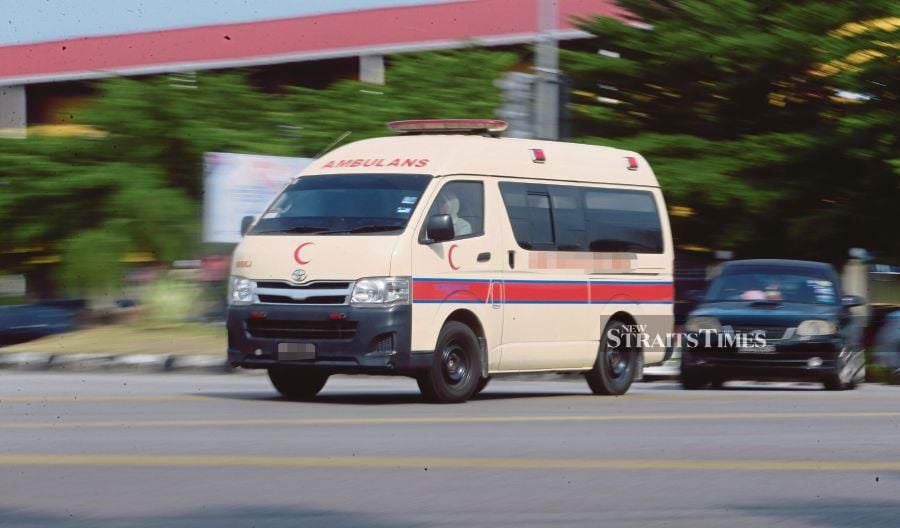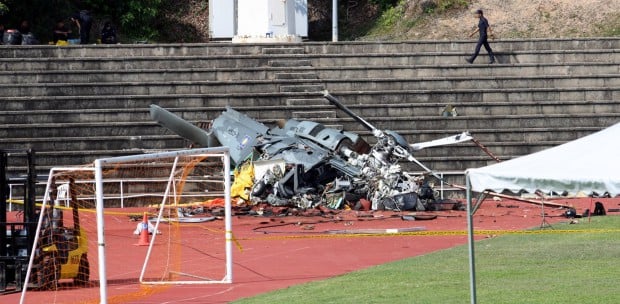ANOTHER ambulance crash has claimed the lives of two victims and injured three others. In yesterday’s 6.40am tragic incident, an ambulance rammed into a road divider at Km368.4 of the North-South Expressway (NSE).
The victims of this rescue mission were identified as 66-year-old patient, Azizah Dolah, who was being rushed to Slim River Hospital by a 37-year-old ambulance driver, Mohd Hafidz Mohd Bahari. The two were instantly killed in the crash.
Initial investigations revealed that the right rear tyre burst, causing the ambulance to sway before hitting a side railing of the expressway.
This crash is not an isolated tragedy involving an ambulance. According to the 2017 report “Trends of ambulance accidents in Malaysia: Implications to public health” by the Institute for Health Systems Research under the Health Ministry, on average, 129 ambulance accidents happened every year nationwide.
Nine fatal accidents and 636 non-fatal accidents happened in 2006, 2009, 2011, 2013 and 2014.
Most (70.4 per cent) ambulance accidents occurred during day time, 55.7 per cent on weekdays, 49.7 per cent of accidents on straight roads and 35.4 per cent on federal roads.
“We are saddened that there was loss of lives in the recent accident involving an ambulance and our deepest sympathies to the families of the patient and driver who perished in the incident,” said Malaysian Medical Association president Dr N. Ganabaskaran.
“An ambulance is a specialised vehicle meant to transport the sick or injured safely to a medical treatment facility.
“This incident should not have happened. We hope for a thorough investigation to be conducted to identify the cause of the accident to ensure the prevention of such incidences in the future.”
He said in emergency situations where an accident victim or patient needed to be rushed to a hospital’s emergency department within the shortest time possible, the safety of those travelling in the ambulance must be prioritised.
“We also wish to emphasise that ambulances are high-usage vehicles which must be regularly serviced and properly maintained to ensure the vehicle is functioning at optimal level at all times.
“Older ambulances should also be properly assessed for roadworthiness to ensure they are safe for driving.”
Dr Ganabaskaran urged the authorities to give additional importance to this area and conduct regular checks on ambulances to ensure they are roadworthy, while also improving road conditions.
Malaysian Road and Transportation Safety Association (MRTSA) president Nik Mohd Salim Nik Mohd Salleh said education and awareness were key in reducing ambulance accidents.
“The public know what to do when there’s an emergency service vehicle behind them or approaching a junction or traffic light, but some choose not to follow.
“However, this can be addressed with the right education and awareness, from school curriculum for children to campaigns for adults.
“The media can play a major role to disseminate information to the public on situations like this through social media, which have the potential of having a larger reach.”
MRTSA said the high accident rates of ambulances in Malaysia could be lowered with right training, such as defensive driving techniques which dive deep into driving behaviour.
“Training should cover other aspects like vehicle maintenance and driving on different type of road conditions or situations.”
MRTSA is working on convincing transport companies, fleet operators and departments with large fleet to embrace ISO 39001, Road Traffic Safety Management System (RTSMS).
“This is a holistic approach to tackle various angles of road traffic challenges.
“The scope of RTSMS can vary depending to its application, from driver management, fleet management, risk identification, training, and key performance index— setting and creating a safety culture.”






